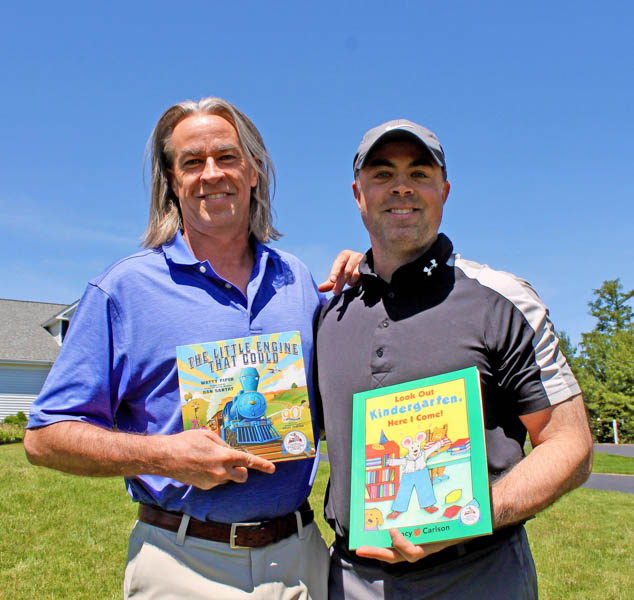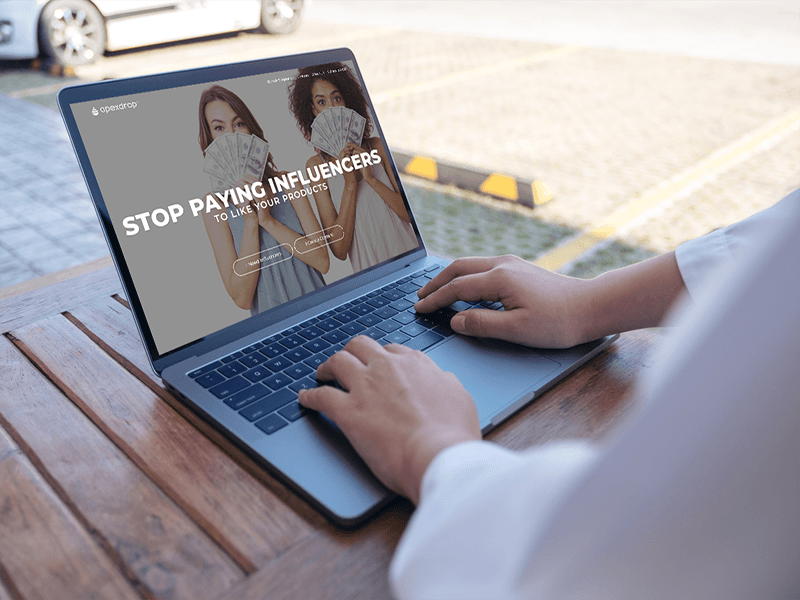A guest blog from Matthew Flowers, president of Ethos Copywriting
In the digital marketing vertical, every technique, technology, and trend seems to evolve by the day. Of course, there are a few components to business that never go out of style: creative thinking, collaboration, and trust. Whether a company is building proprietary healthcare equipment or selling award-winning sausages, Werkbot has a reputation for helping clients look past tech fads to focus on the purpose of marketing: to tell a compelling story.
As a branded journalist, I’m always interested in how people communicate stories. At Ethos Copywriting, we do it with words, but how do developers and designers build a narrative? To find out more, I pulled up a chair with Co-Founder & Creative Partner of Werkbot Studios, Brian Amick, to learn about the method behind the company’s madness.
What I learned is that, while it’s rarely the conscious intent of an agency, the digital marketing industry has a bad habit of either optimizing a site until it’s been bled of aesthetic beauty or focusing so acutely on the design that Google doesn’t have a memo worth of text left to crawl. It’s the ability to balance each of these digital-storytelling components that makes Werkbot such an effective company.
Matt Flowers: Your new website is beautiful. What’s your strategy?

Brian Amick: For us and some of the better brands, we focus on aesthetics and high-quality content as opposed to just “optimizing” everything…It’s about telling our story, talking about what differentiates us, and our process.
We do the same for our clients. We explore who they are, where they came from, and how we can improve their process by focusing on their purpose.
MF: Are there any design trends that you hope go away?
BA: I’m pretty happy with where design is going. It’s focused on cleanliness and brevity.
People have shorter attention spans than they did when there was less to pay attention to. In order to earn their interest, it’s critical to keep your content on the point while also telling a good story … this also means clean imagery and the right font combinations. I always say: fonts are like martinis, one’s not enough and three is too many.
Another component of web development we focus on is ADA compliance. That’s really big for the finance and healthcare industries. But we don’t just use it there. Because ADA compliance is playing a bigger role in the digital sphere, we take that mentality into manufacturing and ecommerce as well.
Finally, we concentrate on ease of use and functionality. Ask yourself: Why does somebody go to a website? They’re looking for something. In digital marketing, you need to help them easily find it.
MF: How do you decide on that conversion strategy?
BA: You need to understand a business’s sales process and channels. For example, do they sell directly or through a distributor? Then, you need to understand who those potential buyers are. If it’s an engineer, he or she may be more attracted to specific language, specifications, and details. If it’s a consumer looking for clothing, he or she may be more attuned to sale information, inventory, and shipping info.
MF: How do you decide between optimization and design if the header text needs to contain some massive, but specific, product or service phrase?
BA: That’s the art and science behind design in general—it’s a balancing act. It’s looking at MOZ, for example, to see that you have zero issues with length, and that’s a great feeling. But, sometimes you need to include some long, complex terms. But here’s the thing: the more complex the product or service is, the more unique it is, which means you may not need those terms in the
text.
The site will still perform well if the phrase is in the meta description. Ultimately, precise content is most important. However, digital is great because we can track performance. Your web presence isn’t a set-it-and-forget-it kind of thing.
MF: What sets Werkbot apart from other agencies?

BA: We’ve been around for 14+ years now. In that time we’ve learned who we are, who we want to work with, and how to be proactive partners with our clients. The clients we work with really understand the importance of good marketing versus cheap marketing, and they want to work with an agency they can trust over the long term.
When it comes to our values, they’re really based on collaboration, trust, and creative thinking. You add those together, and you come up with a great partnership. Our ethos is really focused on those elements. That’s not just with our clients, but internally.
We use the word egalitarian; meaning we’re all equal, we all have a say in the work. I think that’s indicative of good leadership, surrounding yourself with people who are smarter than you so that you can enable them rather than control them.
The jack of all trades is the master of none. It’s important that each member of a team have a different focal point and strength. No one person is smarter than a small group.
MF: You have an air of calmness about you. Do you bring that into your business process?
BA: To me, the most important thing you can do is listen. You learn more that way and understand the client better. Of course, ask questions when you have them, don’t hold back on those. But don’t interrupt, keep it slow, and give other people credit. For instance, if your client mentions some archaic system, say, “It’s incredible you’ve been using this system for all these years. However, I think it would be a smart move to invest in a custom platform that’ll better meets your needs for years to come.”
MF: Tell me about the business culture at Werkbot.
BA: We’re focused on our employees. We realize that job fulfillment is a right, not a privilege. We provide an environment where people want to come in. You’ll always have stressful moments, but with good communication and straightforwardness, we can ensure we’re all on the same page.
I remind the team not to get weighed down by what’s possible. That’s a surefire way to kill creativity. Push the edge where you can, but be sure to tell the right story.
MF: Do you ever go old school and start branding design on a sheet of paper?
BA: When it comes to new branding, every time. Always start with a sheet of paper. If you’re not, you’re doing something wrong. If you start with a preexisting font or image, you’re limiting the possibilities. What I like about design and writing is that you’re building something from nothing. In that nothingness is everything.
You have to create something out of every possibility out there. What you’re doing—even if it’s three words that have been used before—is using those possibilities in a new context. You can write one page of content that’s world-changing and make a one line drawing that lasts for millennia.
Even the Werkbot logo started on paper—even the name itself. I wanted something completely original.
The word I like to use in design—while it's traditionally used in terms of content—is brevity. The easier you can make things, the more immediately understandable, the better.
MF: Are there any business trends that drive you nuts?
BA: I’ve noticed ad agencies aren’t doing the work in-house but marketing those services as if they do. Then they outsource to a virtual agency that then outsources to the cheapest freelancer. From the client’s point of view, I’d wonder, “what happens if something needs to be changed?” You have to go down this chain to get to the developer.
There are a lot of inefficiencies in this strategy. Plus, who is liable in the case of something going wrong? It’s like the digital version of the throwaway culture. Get it done, post it, and forget about it. All the people involved don’t matter.
That’s where we go back to that genuine, honest partnership with our clients. We do have some 1099s, but we’re always transparent. We’ll introduce them to the client because we want to do what’s best for everybody. There are some cases where we work best in the middle. However, we’re also using vetted freelancers whom we’ve used for years, they’re a loose team we bring inside, not strangers we push a project out to.
MF: Where do you think the conversation should start with clients?
BA: It’s always an organic situati
We set up a meeting with someone from business development and an account manager. Depending on what the project is, we’ll then bring in someone who is more social, design, or technology-focused. It’s inefficient to bring a huge team to every meeting. We only bring who needs to be there.
Then, we’ll look at their problem and see what solution we can build to solve it. I try to be a good communicator. That doesn’t mean someone who talks a lot. It means being able to tell a compelling story.
There have been times when we’re not the right fit. I think of a few years ago, when an organization came to us with a two-year-old website. It wasn’t fabulous, it wasn’t bad. But the organization had a particular niche they were targeting.
We said, ‘you know what, what you need is direct mail. Really good direct mail would hit your older target market.’ Although that’s something we can do, I knew another agency that was really good at direct mail. So I said, “I’ll make the introduction.”
The ability to say no is really important, too. If we know it’s not the right fit, we point them in the right direction. I felt good about providing that direction. It lets me specialize in what I enjoy.
MF: Are the majority of your clients long term?
BA: The majority of our clients have an agreement we call “interactive hat.” With that, we build their site, provide reports and guidance, and we run their social media. We’ll even create ongoing content like blogs, newsletters, or media. That helps both parties grow. Generally, this relationship lasts between 12 and 36 months at which point we evaluate goals and whether to expand, maintain, or conclude the service.
MF: Do you find this work fulfilling?
BA: I love helping businesses and organizations grow. And I love showing my six-year-old son websites that I’ve built.
Our goal with clients is to have them become inspired by their digital presence.
We’ve weathered the storm, we’ve seen agencies come and go, and we’ve become regional leaders in the manufacturing,healthcare, finance, and retail verticals. We’re driven by long-term sustainability, not getting rich quick.
We also know there is always going to be someone cheaper. But the cheapest person in the market is always the most dangerous. Why are they cheap? Because corners are being cut. I always say, half-assed businesses do half-assed work.
When we get feedback like, “I got chills just looking at the site,” or “I can’t believe we’re up 200% with sales over last year,” or “I love the fact that I can log into a dashboard and see how my business is really doing,” that’s great! That’s what drives us and motivates us to continue doing a great job. All of us at Werkbot enjoy what we do.
What Werkbot Can Do for You

Werkbot has been helping business in the healthcare, manufacturing, financial, and ecommerce industries for over a decade. They create unforgettable branding, manage entire digital presences, and show partners how to boost sales. If you’re interested in learning more about them and their services, click here to connect with them.


